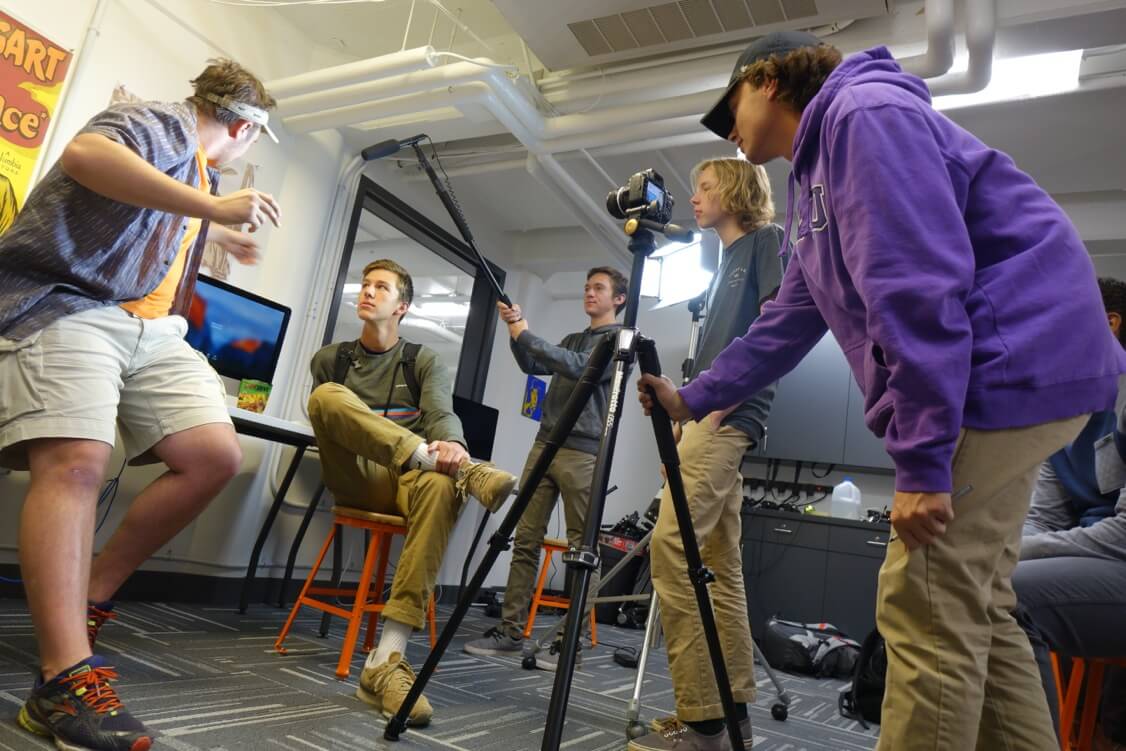There is magic happening on the basement level of the Visual Art Building, where video students exude energy and enthusiasm during a lively discussion on film.
“When I first started taking video in Middle School I didn’t think of movies as works of art,” says senior Evan Reiter. “But as I grew older, I began to understand shot progression, film grammar, and the way shots are assembled in a scene that intentionally tells you something about what is going on.”
Evan is one of 12 students in the Digital Video 4 class – the first advanced film class of its kind at Colorado Academy. These students have been studying and creating videos for up to six years under the direction of teacher Gwylym Cano. Cano teaches his students how the beauty of a film can be in its “non-verbal communication.”
“Magic happens when thinking deeply about what a film is really about,” says Cano.
Likewise, the filmmaking teacher says the advanced class inspires the kind of deep conversations that both rival those on college campuses and challenges students to push the limits in their own work.
Most recently, that was while analyzing the opening scene of Orson Welles’s Citizen Kane, which utilizes a film technique called “match cut.” The film opens up with a series of changing scenes that all feature a lit window located in the same spot in each frame.
Senior Dana Greenleaf describes the match cut technique like this: “It challenges filmmakers to tell a story while maintaining visual continuity of one object or motion.”
“Essentially, we are challenging our storytelling ability by purposefully constraining ourselves.”
Attempting to mimic the technique, video students are using match cuts to tell their own stories in their most recent project. Students like Greenleaf, who along with his group, are using the technique to highlight a water bottle throughout the course of a school day. “Starting in the morning, and then following it on the ride to school, during class, and after school during sports,” Greenleaf says. “Essentially, we are challenging our storytelling ability by purposefully constraining ourselves,” he adds.
A Day in the Life of a Bottle from Colorado Academy Video on Vimeo.
Their enthusiasm behind analyzing and attempting these techniques is palpable, though Cano says that “talking about it isn’t as rich as seeing the final product of their work.”
Still, the students agree that film has taught them more than how to record and edit video.
“I’ve learned that a lot of filmmakers obscure things deliberately to create tension in a piece and illustrate a point,” says Reiter, who adds that recognizing these techniques has helped him in other subjects. “It helps me in English, especially when analyzing a piece of literature.”
It has helped them in other ways to tell creative stories both in and outside of the classroom.
In fact, each student has been so touched by filmmaking that they all plan to dabble in it — either by minoring in the subject in college, or to continuing filmmaking as a hobby. They all agree that the art form provides a unique platform for storytelling.
“It’s different than writing or reading in the sense that the director has his or her own vision. While it is open to interpretation, you can also direct your audience to a desired result,” says Reiter.
